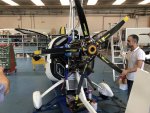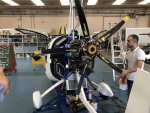EdL;n1140386 said:
In all your extensive answers can you show me where you pointed out demonization, ignored facts, and embraced gossip? I didn’t see any of those in this entire thread so would appreciate the clarification.
"Regarding Chris Lord's N198LT, it seems confirmed from multiple sources that it had previously been rolled over,
and repaired by AutoGyro USA in Maryland. The obvious question is whether some control system parts were not prudently replaced.
Furthermore, rumor has it that after the repair N198LT still had a bad rotor shake, and that Chris was trying to reduce it.
It is unknown if he had succeeded doing so."
...this accident aircraft I understand was an accident re-build and was known to be a pig to fly & called a "death-trap"
by many who spent a few minutes in it - landed & vowed ...never to fly it again! ....YES ...that IS hearsay! ..... but from more than one source!
"This jives what I've also been hearing.
Certain people out there in Florida know the local reputation of N198LT.
This issue needs to be aired out, along with detailed repair records of that Cavalon."
"I.e., was it flying on older parts which may have been damaged in the rollover yet not replaced?
The rumored bad rotor shake seems connected."
In my opinion if Kolibri heard the rumors Chris Lord likely heard the rumors.
I would not take a friend on a 64 nautical mile flight at near VNE in a Cavalon that had crashed and been badly repaired; that flew badly and had excessive rotor shake and I don’t know anyone who would.
This pretty well fits my definition of demonizing the pilot of the accident aircraft and AutoGyro USA.
This appears to me to be based on gossip.
It doesn't matter who said it first, he posted it; it is his gossip.



